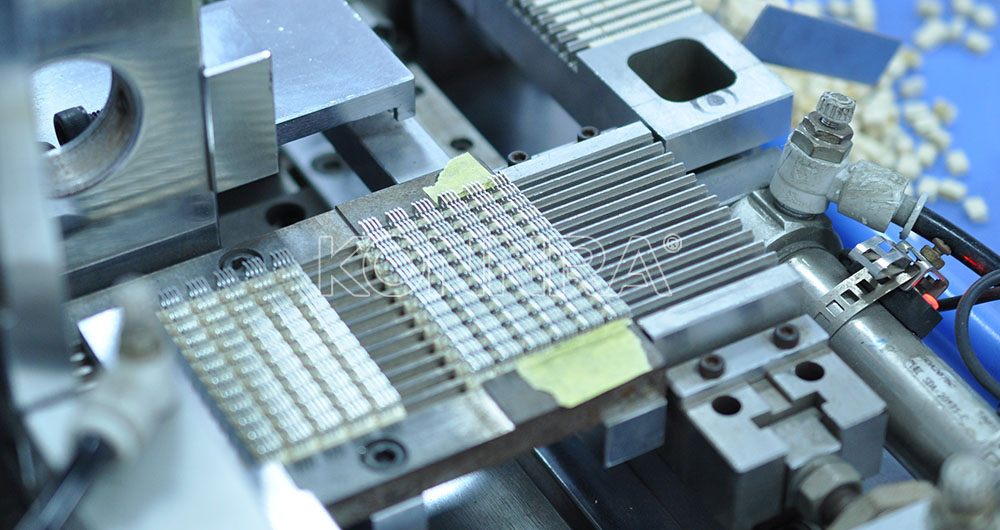Connector test standard
With the development of society and the advancement of science and technology, connectors play an increasingly important role in various fields to ensure their safety, durability and other performance, and testing connectors is essential. In order to ensure that the connectors delivered to customers have good quality and performance, CConrey will conduct a series of tests on the manufactured connectors before they leave the factory. But do you know the test standards for connectors? Let us walk you through the standards that are commonly referred to when testing connectors.
In general, the connector test standards mainly include insertion and withdrawal force, insulation resistance, durability, voltage resistance, contact resistance, vibration, mechanical impact seven aspects, as follows:
- Connector insertion force test. Reference standard: EIA-364-13
- Test the connector insulation resistance. Reference standard: EIA-364-21
- Connector durability test. Reference standard: EIA-364-09
- Connector withstand voltage test. Reference standard: EIA-364-20
- Connector contact resistance test. Reference standard: EIA-364-06/EIA-364-23
- Connector vibration test. Reference standard: EIA-364-28
- Mechanical impact test of connector. Reference standard: EIA-364-27
However, it should be noted that different manufacturers refer to different standards according to their own actual. For example, some technology connectors need to operate at extremely high or very low temperatures, so common reference standards no longer apply here. No matter which standard is referenced to test the connector, the ultimate goal is to ensure that the connector works in its operating environment. These are common connector test standards.
Basic structure of the connector
The connector is a mechanical part of the transmission device that completes the circuit in the electronic device and is irreplaceable. The basic structure of the connector can be divided into four parts: contact, insulator, shell and accessories.
Contact part: composed of male contact and female contact, through the insertion of male contact and female contact to complete the electrical connection. The contact is the core part of the connector, which mainly plays the role of electrical connection.
Insulators: The contacts can be arranged according to the required position and spacing to ensure insulation between the contacts and between the housing and the contacts. The insulator is also known as the base, and the installation plate requires the insulation material to have good insulation resistance, voltage resistance, and ease of processing.
Housing: As the outer cover of the connector, mainly to provide mechanical protection for the built-in insulation mounting plate and pins.
Accessories: There are two kinds of structural accessories and installation accessories. Structural accessories – clamp, coupling ring, cable clamp, positioning pin, guide pin, sealing ring, sealing gasket, etc. Mounting accessories – screws, nuts, screws, spring rings, etc.
After the connector is manufactured, the finished product is usually tested and inspected. For example, BTB/ When testing FPC connectors, it is necessary to use a high-current elastic microneedle module to connect, which can conduct current and maintain the stability of the test. In the current transmission, the carrying capacity of the high-current elastic microne module is as high as 50A, which is desirable that the electronic Tch value can reach at least 0.15mm, and the average service life is 20w times, with high accuracy and small impedance, which is conducive to improving the test efficiency.
Inspection of connector products
The inspection requirements of connector products mainly include appearance, quality and performance. It is reflected in:
1. Structure size: There are certain requirements for the shape and size of the shape, the connector connection has space restrictions, such as the single board connector can not contact with other parts, so the structural size check is the first.
2. Reliability: The reliability of the connecting parts is related to the connector. Current connection strength and reliability are necessary items for the connector performance test.
3. Shielding: The shielding effect of the connector is getting more and more attention. The shielding effect can be connected to the shielding layer on the metal shell of the connector, or the copper skin is wrapped in the plug part of the connector, and the shielding layer and the copper skin of the cable are welded together to play a shielding role.
4. Versatility: When choosing connectors, try to choose common objects, which can reduce supply risks and costs and reduce material types.
5. Durability: The durability of the connector is reflected in whether it can adapt to the complex environment, and the common inspection indicators are high temperature resistance, low temperature resistance, salt spray resistance, corrosion resistance, etc.
6. Impedance matching: the connector RF signal requires high impedance matching, and impedance mismatch will cause signal reflection and affect signal transmission.
After testing and inspection, the connector is guaranteed in performance and quality, and it is safer to use. With the development of electronic products, the performance of the connector is also developing to high speed, high integration, with the development of digitalization, the volume is getting smaller and smaller, miniaturization, the product shows low cost, module combination, easy to plug and unplug characteristics. The market is expected to show an upward trend in the future.










